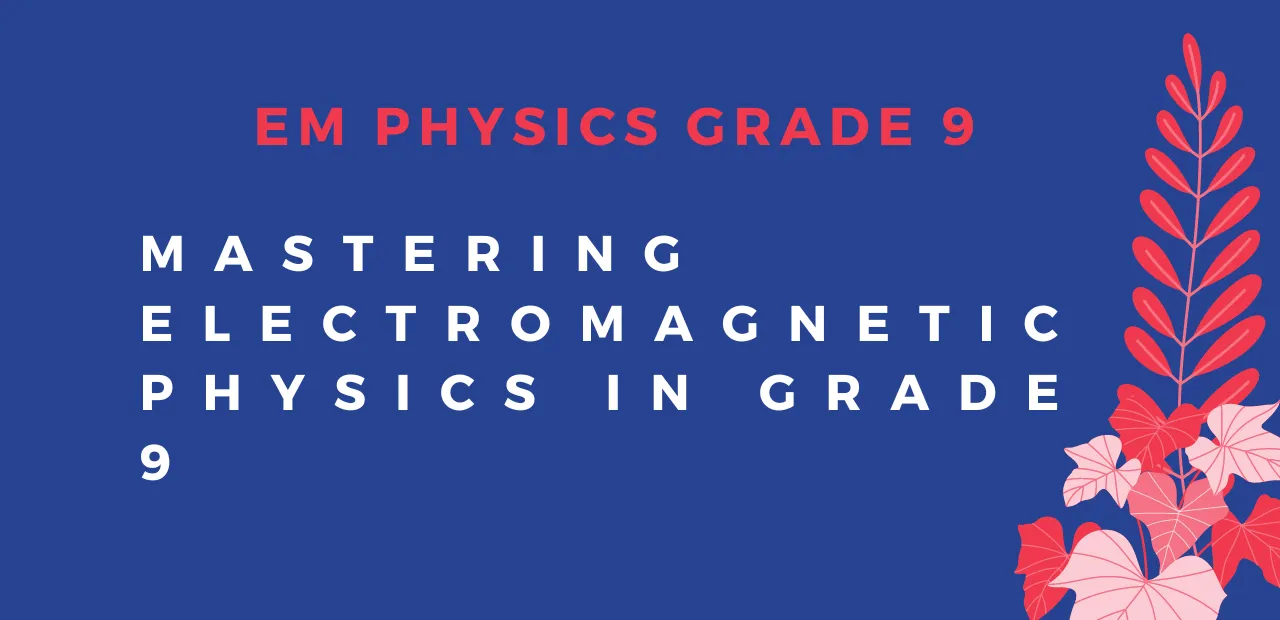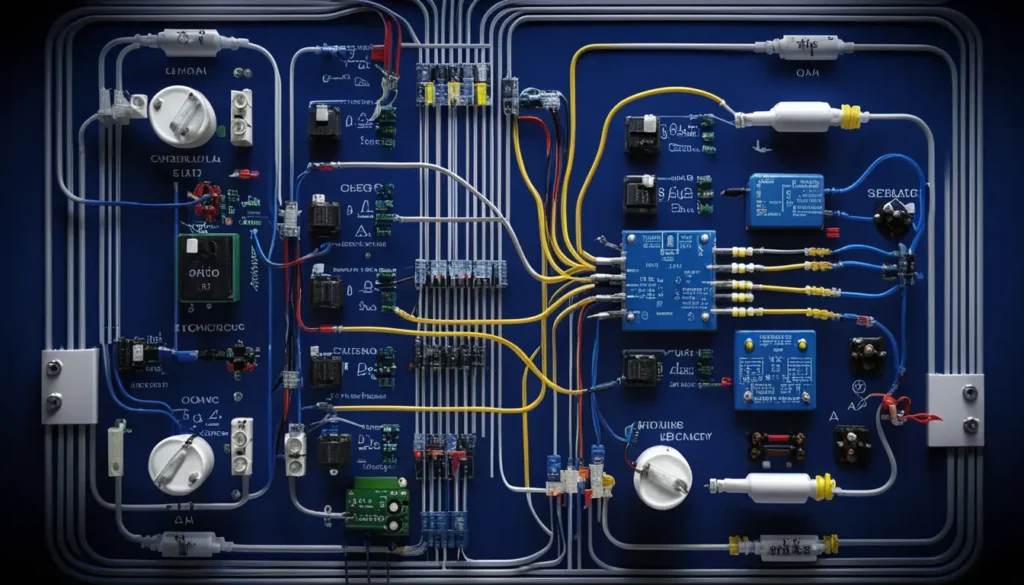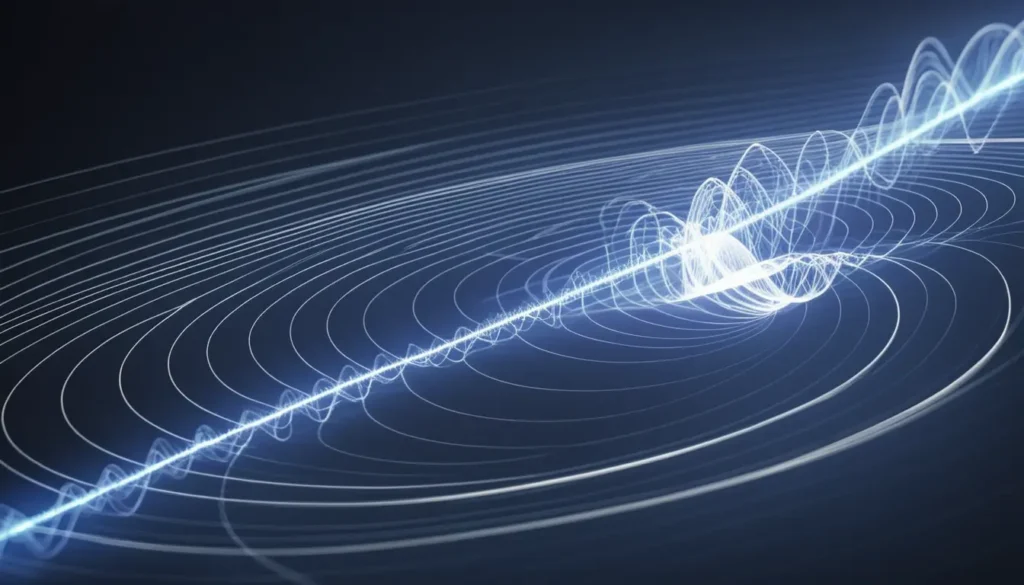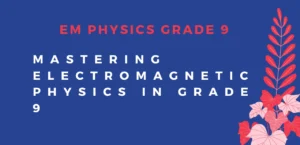Em physics grade 9: Mastering Electromagnetic Physics in Grade 9 Free PDF 2024

Introduction
Electromagnetic (EM) physics is a fascinating field that forms the backbone of many modern technologies we use daily. For Grade 9 students, understanding the fundamentals of EM physics is crucial, as it lays the groundwork for more advanced concepts in higher grades and opens doors to exciting career paths in science and engineering.
This comprehensive guide will take you through the key concepts of EM physics at the Grade 9 level. We’ll explore everything from the basics of electricity and magnetism to their practical applications in everyday life. Whether you’re a student looking to excel in your physics class, a parent supporting your child’s education, or a teacher seeking resources, this article will provide valuable insights and strategies for mastering EM physics.
By the end of this guide, you’ll have a solid understanding of EM physics concepts, practical study tips, and an appreciation for the importance of this field in our technology-driven world. Let’s embark on this electrifying journey through the world of electromagnetic physics.
1. Understanding Electricity: The Basics

Electricity is a fundamental concept in EM physics. Let’s break down the key components:
What is electricity?
Electricity is the flow of electric charge. It’s all around us, from the lightning in the sky to the devices we use every day.
Key concepts to understand:
- Electric charge is the property of matter that causes it to experience a force when placed in an electromagnetic field.
- Current is the flow of electric charge through a conductor.
- Voltage: The difference in electric potential energy between two points.
- Resistance: The opposition to the flow of electric current.
Ohm’s Law: The Foundation of Electrical Circuits
Ohm’s Law is a crucial principle in EM physics. It states that the current through a conductor is directly proportional to the voltage across it, given the resistance remains constant.
The formula is: V = IR
Where:
- V is voltage (measured in volts)
- I is current (measured in amperes)
- R is resistance (measured in ohms)
Understanding Ohm’s Law is essential for solving many electrical problems and designing circuits.
Static Electricity: Charges at Rest
Static electricity occurs when there’s an imbalance of electric charges within or on the surface of a material. It’s the reason you might get a shock after walking on a carpet.
Key points about static electricity:
- It involves stationary electric charges
- Can be created by friction, contact, or induction
- Explains phenomena like lightning and static cling
Also, Check English grade 9: English grade 9 district assessment With answer key, Free PDF 2024
2. Magnetism: Nature’s Invisible Force
Magnetism is another cornerstone of EM physics. It’s the force that makes compasses work and keeps notes stuck to your refrigerator.
Basics of Magnetism
Magnetism is a force that acts between magnetic materials and moving electric charges. Key concepts include:
- Magnetic fields: The region around a magnet where its force can be detected
- Magnetic poles: The north and south ends of a magnet
- Magnetic force: The attractive or repulsive force between magnetic objects
Earth’s Magnetism
The Earth itself acts like a giant magnet, with magnetic field lines running from the South Pole to the North Pole. This is why compasses work and how animals like birds and sea turtles navigate during migration.
Electromagnetism: The Link Between Electricity and Magnetism
One of the most groundbreaking discoveries in physics was that electricity and magnetism are intimately related. This relationship forms the basis of electromagnetism, which we’ll explore in more depth in the next section.
3. Electromagnetism: The Unification of Forces
Electromagnetism is the unified theory of electricity and magnetism, showing that these are actually two aspects of the same fundamental force.
Key Principles of Electromagnetism
- Moving charges create magnetic fields. When electric charges move, they generate a magnetic field around them.
- Changing magnetic fields induce electric currents: A changing magnetic field can induce an electric current in a nearby conductor.
- Electromagnetic induction: This principle is the basis for generators, transformers, and many other devices.
Faraday’s Law of Induction
Michael Faraday discovered that a changing magnetic field induces a voltage in a conductor. This is known as Faraday’s Law of Induction and is crucial for understanding how we generate electricity on a large scale.
Applications of Electromagnetism
Electromagnetism has numerous practical applications, including:
- Electric motors
- Generators
- Transformers
- Electromagnetic relays
- Magnetic levitation (maglev) trains
Understanding these applications can help make the abstract concepts of electromagnetism more concrete and relatable.
4. Electric Circuits: Powering Our World

Electric circuits are the pathways that allow electricity to flow and power our devices. Understanding circuits is crucial for applying EM physics concepts.
Components of an Electric Circuit
Basic circuit components include:
- Power source: Provides the electrical energy (e.g., batteries, generators)
- Conductors: Materials that allow electricity to flow easily (e.g., wires)
- Load: The device that uses the electrical energy (e.g., light bulb, motor)
- Switch: Controls the flow of electricity in the circuit
Types of Circuits
- Series circuits: Components are connected in a single path
- Parallel circuits: Components are connected across multiple paths
- Complex circuits: Combinations of series and parallel connections
Circuit Analysis
Learning to analyze circuits involves:
- Calculating total resistance in series and parallel circuits
- Applying Ohm’s Law to determine current, voltage, or resistance
- Understanding power consumption in electrical devices
Practicing circuit problems is essential for mastering this aspect of EM physics.
5. Electromagnetic Waves: Light and Beyond

Electromagnetic waves are a key concept in EM physics, encompassing a wide range of phenomena, including visible light, radio waves, and X-rays.
The Electromagnetic Spectrum
The EM spectrum includes:
- Radio waves
- Microwaves
- Infrared radiation
- Visible light
- Ultraviolet radiation
- X-rays
- Gamma rays
Each type of EM wave has different properties and applications.
Properties of EM Waves
All EM waves share certain characteristics:
- They travel at the speed of light in a vacuum
- They carry energy and momentum
- They can be reflected, refracted, and diffracted
Light: A Special Case of EM Waves
Visible light is a small part of the EM spectrum that our eyes can detect. Understanding the behavior of light helps explain phenomena like:
- Colors
- Rainbows
- Mirages
- Fiber-optic communications
6. Practical Applications of EM Physics
EM physics isn’t just theoretical; it has numerous real-world applications that affect our daily lives.
Communication Technologies
- Radio and television: Use EM waves to transmit information
- Mobile phones: Rely on electromagnetic signals
- Wi-Fi: Uses high-frequency EM waves for wireless internet
Medical Applications
- MRI machines: Use strong magnetic fields and radio waves to create detailed images of the body
- X-ray imaging: Uses high-energy EM waves to see inside the body
- Radiation therapy: Uses targeted EM radiation to treat cancer
Energy Production
- Solar panels: Convert light (EM waves) into electricity
- Wind turbines: Use electromagnetic generators to produce electricity
- Nuclear power plants: Rely on electromagnetic principles in various processes
Transportation
- Electric vehicles: Use electromagnetic motors for propulsion
- Maglev trains: Use electromagnetic levitation and propulsion
Understanding these applications can help motivate students by showing the real-world relevance of EM physics.
7. Study Strategies for EM Physics Success
Mastering EM physics requires effective study techniques. Here are some strategies to help you succeed:
Active Learning Techniques
- Practice problem-solving: Regularly work through physics problems, not just those assigned for homework.
- Create concept maps: Visually connect different EM physics concepts to see how they relate.
- Teach others: Explaining concepts to classmates or family members can reinforce your own understanding.
Effective Note-Taking
- Use the Cornell method or mind mapping for organized, easy-to-review notes
- Include diagrams and equations in your notes for visual reinforcement
- Review and summarize your notes regularly
Utilize Online Resources
- Watch educational videos on platforms like Khan Academy or YouTube
- Use physics simulation software to visualize complex concepts
- Join online forums or study groups to discuss challenging topics
Regular Review and Self-Testing
- Create flashcards for key terms and equations
- Take practice quizzes to identify areas that need more study
- Review past exams and homework to reinforce learning
Remember, consistent study habits are key to success in EM physics.
8. Common Challenges and How to Overcome Them
Many students find certain aspects of EM physics challenging. Here’s how to tackle some common hurdles:
Abstract Concepts
Challenge: EM physics often deals with invisible forces and fields. Solution: Use analogies, visualizations, and hands-on experiments to make abstract concepts more concrete.
Mathematical Complexity
Challenge: EM physics requires a solid foundation in mathematics. Solution:
- Review prerequisite math skills regularly
- Practice applying math to physics problems
- Seek extra help or resources for challenging mathematical concepts
Vocabulary and Terminology
Challenge: EM physics introduces many new terms and concepts. Solution:
- Create a glossary of key terms
- Use mnemonic devices to remember complex terms
- Apply new vocabulary in context through discussions or writing exercises
Connecting Theory to Practice
Challenge: Relating classroom learning to real-world applications. Solution:
- Explore practical applications of EM physics in everyday life
- Conduct simple experiments at home to reinforce concepts
- Discuss how EM physics relates to current technologies and scientific discoveries
9. Experiments and Activities to Reinforce Learning
Hands-on activities can greatly enhance understanding of EM physics concepts. Here are some experiments you can try:
- Build a simple electric circuit. Use batteries, wires, and a light bulb to create basic series and parallel circuits.
- Demonstrate static electricity: Use a balloon and your hair to explore electrostatic forces.
- Create an electromagnet. Wind copper wire around a nail and connect it to a battery to make a simple electromagnet.
- Visualize magnetic fields: Use iron filings and a magnet to see magnetic field lines.
- Make a homemade motor: Build a simple electric motor using common materials to understand electromagnetism in action.
Always follow safety guidelines and seek adult supervision when conducting experiments.
10. Preparing for Advanced EM Physics Topics
As you progress in your physics education, you’ll encounter more advanced EM topics. Here’s a preview of what’s to come:
- Maxwell’s equations: The fundamental equations of electromagnetism
- Quantum electrodynamics: The quantum theory of the electromagnetic interaction
- Electromagnetic waves in different media: How EM waves behave in various substances
- Relativistic electromagnetism: How electromagnetism relates to Einstein’s theory of relativity
To prepare for these advanced topics:
- Develop a strong foundation in the basics covered in this guide
- Cultivate curiosity about the deeper aspects of EM physics
- Practice mathematical skills, especially calculus and vector analysis
- Read popular science books or articles about cutting-edge physics research
Conclusion
Electromagnetic physics is a vast and exciting field that forms the basis of much of our modern technology. By mastering the fundamentals of electricity, magnetism, and electromagnetism in Grade 9, you’re setting yourself up for success in more advanced physics courses and potentially exciting careers in science and engineering.
Remember, learning EM physics is a journey. Don’t be discouraged if you find some concepts challenging at first. With consistent study, practice, and hands-on experimentation, you’ll develop a deep understanding and appreciation for this fascinating area of science.
We encourage you to continue exploring EM physics beyond the classroom. Try the experiments suggested in this guide, seek out additional resources, and always stay curious about the electromagnetic phenomena all around us.
Do you have any questions about EM physics? What topics do you find most interesting or challenging? Share your thoughts in the comments below. Let’s start a discussion and learn from each other!
Read Online Em physics grade 9













1 comment